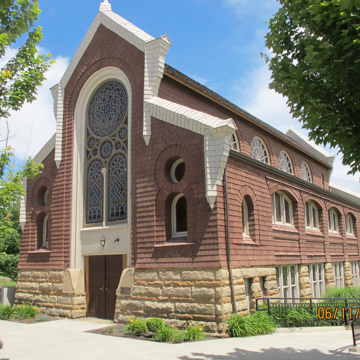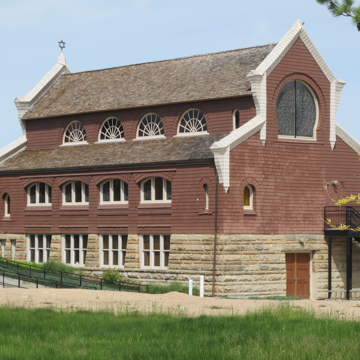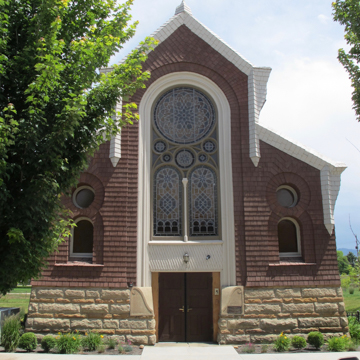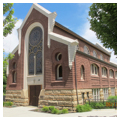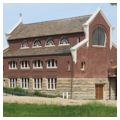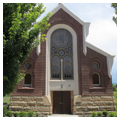You are here
Congregation Ahavath Beth Israel Synagogue
Boise’s Beth Israel Synagogue, built in 1896, is the oldest continuously occupied synagogue in the western United States and the oldest of its building type in Idaho. The state’s early mining boom attracted pioneers to the Boise area, including German Jewish entrepreneurs and merchants who helped lay the foundation for commerce in the Idaho Territory. Religious services initially took place in residences or rented halls. In 1895, Jewish community leaders including Boise mercantile owners Moses Alexander and David Falk drafted a constitution for a permanent congregation in Boise. The next year, the congregation hired architectural firm Chestney and Schroeder to design its synagogue in downtown Boise, just three blocks from the Territorial Capitol, which later became site of the current Idaho State Capitol.
Chestney and Schroeder’s Rundbogenstil design followed a popular trend in synagogue architecture on both sides of the Atlantic. Beth Israel Synagogue also featured elements of the Moorish Revival, reminiscent of New York City’s Central Synagogue (1872). Constructed on a sandstone base with variegated rows of stone, the upper, wood-shingled exterior resembles stonework in its artful application. The arch over the front entrance displays a rhythm of circles supporting the sanctuary’s crowing feature—a large, circular, stained glass rose window, which was carefully restored in 2012. Two round windows also adorn the end of the interior aisles. The basilica-shaped sanctuary, with a below-grade meeting room, seats 150 and features keyhole-shaped arches decorated with then novel electric lights.
The congregation raised nearly $100,000 to restore the structure in 1981. In 2003, Cole Associates relocated the synagogue three miles to its present location on Latah Street, to an elevated land locals call the Boise Bench. During the move, patrons discovered that Marshall Field and Company and Levi Strauss and Company both contributed funds to its original construction. As this time, the congregation erected a multipurpose and educational building next door to the relocated synagogue.
References
Hart, Arthur A. Historic Boise, An Introduction to the Architecture of Boise, Idaho, 1863-1938. Boise: Historic Idaho, Inc., 1993.
Hart, Arthur A., “Congregation Beth Israel Synagogue,” Ada County, Idaho. National Register of Historic Places Inventory-Nomination Form, 1972. National Park Service, U.S. Department of the Interior, Washington, D.C.
Neil, J. Meredith. Saints and Oddfellows: A Bicentennial Sampler of Idaho Architecture. Boise, ID: Boise Gallery of Art Association, 1976.
Webb, Anna. 150 Boise Icons to Celebrate the City’s Sesquicentennial. Boise: Idaho Statesman, 2013.
“Virtual Jewish World: Idaho, United States.” Jewish Virtual Library. Accessed January 1, 2019. http://www.jewishvirtuallibrary.org/.
Writing Credits
If SAH Archipedia has been useful to you, please consider supporting it.
SAH Archipedia tells the story of the United States through its buildings, landscapes, and cities. This freely available resource empowers the public with authoritative knowledge that deepens their understanding and appreciation of the built environment. But the Society of Architectural Historians, which created SAH Archipedia with University of Virginia Press, needs your support to maintain the high-caliber research, writing, photography, cartography, editing, design, and programming that make SAH Archipedia a trusted online resource available to all who value the history of place, heritage tourism, and learning.

